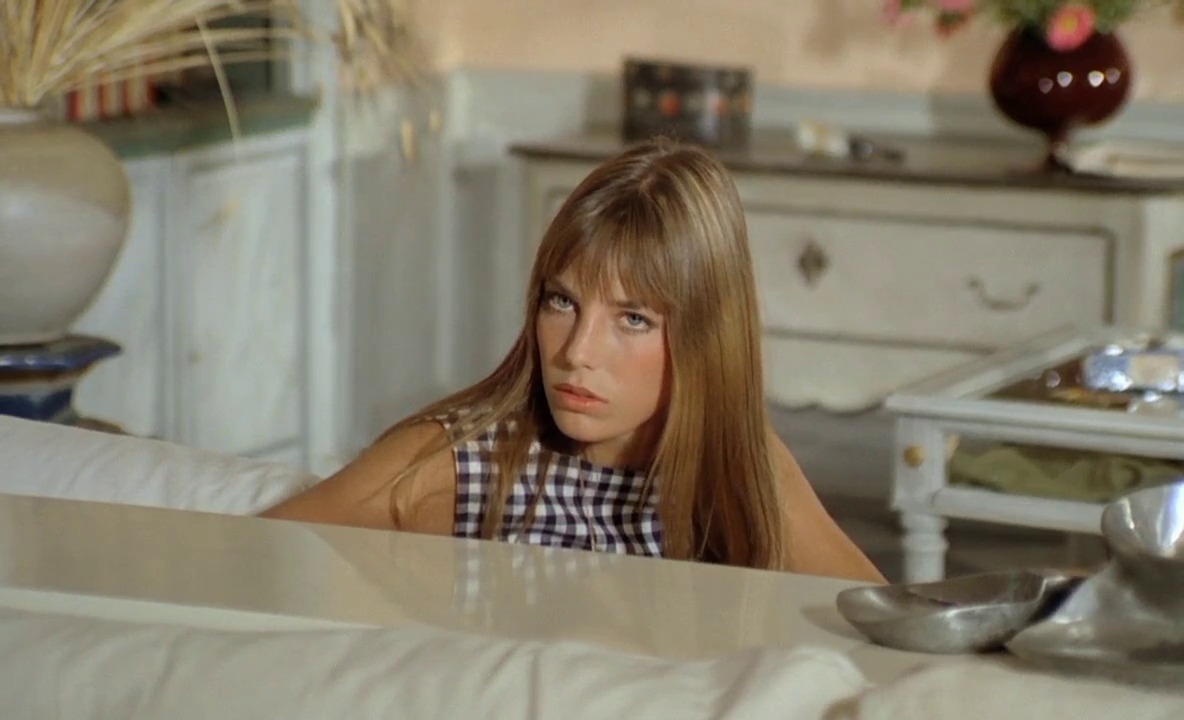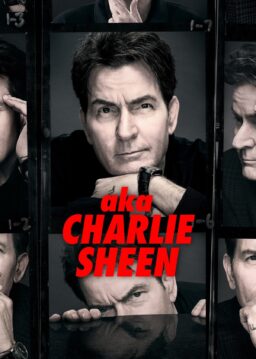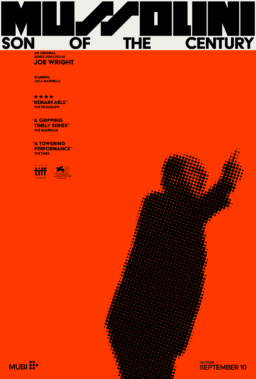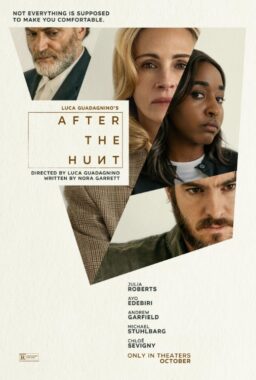There have been plenty of instances over the years in which the children of movie stars have gone into the business themselves, sometimes in order to demonstrate their own unique talents and sometimes in order to cash in on the family name. One of the most fascinating examples of this has to be the twin careers of acclaimed actress Jane Birkin and her daughter, the equally celebrated Charlotte Gainsbourg. Taken individually, these are two women who have captivated moviegoers around the world for over five decades with their raw acting talent, their undeniable charisma and offbeat sex appeal and their willingness to take on the kind of risky material that would send most actresses running for the hills. However, when you begin to look at the films that they have done, any number of common themes and characteristics begin to emerge that inform each other’s work in interesting and oftentimes provocative ways.
Thanks to the Film Society of Lincoln Center in New York, you can do just that with “Jane and Charlotte Forever,” a dual retrospective running January 29—February 7 that will showcase 19 films from the two actresses (including a couple featuring them together) that include some of their most famous (and occasionally infamous) works, most of which will be presented in 35mm. In addition, both Birkin and Gainsbourg are scheduled to sit for a joint Q&A on the 29th and will be introducing a couple of additional screenings as well. To keep things further in the family (a recurring element in both their filmographies, as you will too discover), the Film Society’s Furman Gallery will also be presenting “Actresses by Kate Barry,” an exhibition of photographs taken by the late Kate Barry, Jane’s daughter from her marriage to composer John Barry and half-sister to Charlotte. For fans of the two stars and of bolder side of the last half-century of European cinema, this retrospective is essential and for those who are less familiar with their work, checking out some of the films on display will certainly raise your awareness of their prodigious talents and more than a few eyebrows as well.
Birkin was born on December 14, 1946 and made her first screen appearance in 1965 as an extra in Richard Lester’s groundbreaking “The Knack … and How to Get It.” (Jacqueline Bisset and Charlotte Rampling would also make their screen debuts as extras in the film—whoever did the casting deserved some sort of Lifetime Achievement Award for that movie alone.) A year later, she would turn up again briefly in the forgettable caper comedy “Kaleidoscope” and then made the first of what would prove to be a number of controversial career moves by appearing in Michelangelo Antonioni’s art-house hit “Blow-up” in a scene in which she and Gillian Hills cavorted with photographer David Hemmings that included the first instance of full frontal female nudity in a British film. Her first significant role came in Jacques Deray’s “La Piscine” (1969), an erotic thriller involving tensions between a couple (Alain Delon and Romy Schneider), a visiting old friend (Maurice Ronet) who was once the woman’s lover, and the friend’s heretofore unknown 18-year-old daughter (Birkin) that eventually hit the boiling point as the four spend part of the summer together in a gorgeous house on the Cote d’Azur. A big hit in its time, it doesn’t play quite as well today and runs a little too long for its own good. But as an excuse to watch ridiculously attractive people gamboling about for a couple of hours, it gets the job done. It also demonstrates that at even this early stage in her career, Birkin could more than hold here own with her more experienced co-stars.
Her next film, “Slogan” (1969), would prove to be a far more significant work for her, both professionally and personally. In it, she plays a young British woman who catches the eye of a 40-year-old director of commercials when they happen to meet in Venice and causes him to leave his pregnant wife. The two embark on a tumultuous affair that, unsurprisingly, does not end well. Hired to play the man was Serge Gainsbourg, the French singer/songwriter/actor who achieved plenty of fame and notoriety due to his sometimes scandalous song lyrics and his affair with none other than Brigitte Bardot. The movie as a whole is pretty dumb and almost achingly of its time but the unlikely pairing of Birkin and Gainsbourg—her with her coltish, almost androgynous beauty and he with a look and demeanor that all but redefined the word “hangdog”—resulted in the kind of immediate on-screen chemistry that could make even the silliest film work. Of course, the chemistry between them was not limited to their time in front of the cameras and the two began a romance that would inspire further scandal later that year with the release of “Jane Birkin/Serge Gainsbourg,” an album that contained the startlingly explicit song “Je t’aime … moi non plus,” a tune whose explicit lyrics and moans of ecstasy were so pronounced that even the Vatican publicly denounced it as being offensive.

Over the next few years, Birkin would collaborate on-screen with Gainsbourg on a few film productions and off-screen with the birth of their only child, daughter Charlotte, in 1971 and also appeared in Roger Vadim’s “Don Juan, or If Don Juan Were a Woman” (1973), a film in which her character is seduced by none other than Brigitte Bardot. That film was controversial but it was nothing compared to the outcry that followed the next collaboration between Birkin and Gainsbourg, the 1976 film “Je t’aime … moi non plus” (pictured above). Making his directorial debut, Gainsbourg told the story of Krassly (Warhol Superstar Joe Dallesandro), a gay garbageman who meets Johnny (Birkin at her most androgynous) at the remote truck stop where she works—she is instantly smitten with him and he seems reasonably interested as well. Their budding romance is potentially thwarted by the fact that Krassly is unable to achieve an erection when they attempt to make love conventionally—a different point of entry allows for his arousal but inspires such screams of pain from her that they are thrown out of every place where they are staying before they can complete the deed. There is a further complication in the form of Padovan (Hugues Quester), Krassly’s fellow garbageman and male lover who is none to happy by the attention he is giving to Johnny and who will go to great lengths to have Krassly for himself.
Simply put, “Je t’aime … moi non plus” is one crazy film and even after forty years, it retains the power to leave even the most jaded of moviegoers startled by the on-screen goings-on. At times reminiscent of a French take on the filmography of the late, great Russ Meyer (though Birkin certainly would not have passed Meyer’s somewhat particular casting requirements), this meditation on sex, love, lust, death and misplaced machismo is one of those rare films that could comfortably screen in arthouses and grindhouses alike while arousing outrage (among other things) from the patrons of both. As a narrative, it is pretty terrible—mean, ugly and borderline misogynistic at times—but as a cinematic equivalent to Gainsbourg’s musical endeavors, it does cast an undeniable spell on viewers, and seeing two of the most distinctive sex symbols of the Seventies paired up together is certainly compelling. This may not be the best film playing at this retrospective, but considering its relative rarity and the fact that both Birkin and Dallesandro are scheduled to appear for a Q&A after its first screening, it is certainly one of the must-sees.
In the wake of that film, Birkin switched things up considerably with appearances in such comparatively genteel projects as two star-studded adaptations of Agatha Christie novels, “Death on the Nile” (1978) and “Evil Under the Sun” (1983) along wit Jacques Rivette’s largely overlooked “Love on the Ground” (1984), in which she and Geraldine Chaplin play a couple of actresses hired by a playwright to appear in his latest work, which is to be staged at his lavish mansion. In 1980, she split with Gainsbourg and subsequently began a relationship with filmmaker Jacques Dillon, with whom she would have a daughter, Lou (now a singer/model/actress of note herself), and act for in three movies, including “The Pirate” (1984), an edgy erotic drama in which she plays a married woman who holes up in a hotel with her female ex-lover (Maruschka Detmers) for a long and emotionally volatile evening that boils over with the arrival of her husband (played, in a perverse bit of casting, by Birkin’s real-life brother Andrew, himself an accomplished director and actor).

1984 would also prove to be the year that Charlotte Gainsbourg stepped in front of the cameras for the first time, playing Catherine Deneuve’s daughter in “Paroles et musique.” That same year, she would be involved in her own controversy when she made her musical debut alongside her father on a song he wrote entitled “Lemon Incest” that contained lyrics that implied … well, you saw the title. Her first notable screen role came the next year when she was hired by Claude Miller to appear in “L’effrontee” (1985, pictured above), a loose adaptation of Carson McCullers’s “The Member of the Wedding” in which she played a bored working-class 13-year-old girl who cannot wait to grow up into a better life and thinks that her ticket out is a famous child prodigy pianist staying in her town for a while. This is a wise and perceptive look at the pains of growing up both too fast and too slow—though it is ultimately one of the sunnier films in the career of the usually more pessimistic Miller—and much of its success is due to the knockout performance by Gainsbourg, whose turn earned her a César Award for Most Promising Actress.
Controversy returned the next year with the release of “Charlotte for Ever,” a film that Gainsbourg co-starred in with her father, who also wrote, directed and composed the music. Apparently designed as a cinematic companion piece to their musical collaboration, the film tells the story of a once-successful writer (guess who) who, still reeling from the tragic death of his wife, lives with his 15-year-old daughter Charlotte (guess who). And while he winds up sleeping with some of her friends that she brings over, it appears as if he may have certain desires towards Charlotte as well. Like “Je t’aime … moi non plus,” “Charlotte for Ever” is the kind of cinematic provocation that leaves you thinking there’s no way it could be made today and wondering how the hell it got made thirty years ago. It isn’t nearly as interesting as that previous work—Serge Gainsbourg’s narrative skills had not improved over the years and the charisma he once effortlessly displayed was also clearly on the wane—but Gainsbourg makes it watchable through the sheer force of her personality and self-confidence. As sleazy as the proceedings get (and this is the kind of film where you will want to take a “Silkwood”-type shower afterwards), she is so strong and sure that you never get the sense she is being exploited, which is perhaps the only thing that keeps the proceedings from becoming utterly unbearable.
In 1988, Birkin would return to the limelight in typically controversial form with the equally perverse drama “Kung-fu Master!” Working from a story that she devised in conjunction with director Agnes Varda, her character is a 40-year-old divorced mother of two daughters (who are played by her real-life daughters) who finds herself falling in love with a 14-year-old boy (played by Varda’s son Mathieu) and attempting to pursue a relationship with him in secret. She even goes so far to spend some idyllic time together on a distant island away from the prying eyes of society and her own daughter, who knows what is going on and who is horrified. It sounds monumentally sleazy, sure, but the end result is surprisingly touching, witty and, dare I say, tastefully done and also features what is unquestionably Birkin’s finest work as an actress. As ridiculous and potentially distasteful as the premise may seem, she connects with the character in some deeply personal way (presumably augmented by the fact that her children, parents and home are played here by their real-life analogues) that allows us to understand and even sympathize with this woman and her plight instead of just recoiling at her actions. At the same time that Birkin and Varda collaborated on this project, they also worked together on the sort-of documentary “Jane B for Agnes V,” which alternated scenes in which Birkin discussed her life and work with scenes in which Varda puts her in a number of possible roles ranging from Tarzan’s Jane to Joan of Arc to Stan Laurel to Varda’s Oliver Hardy. Fans of Birkin will find this to be a fascinating portrait of an artist at a personal and professional crossroads that probably reveals more of who she is than a more conventional documentary might have, though others may decide that it is a little too much of a good thing. (Long unavailable on home video in the US, “Kung-fu Master!” and “Jane B. for Agnes V.” will be available on VOD on February 2 and on Blu-ray on March 10 from Cinelicious Pics.)

Gainsbourg achieved her big international breakthrough when she reunited with Claude Miller to star in “The Little Thief” (1988, pictured above). Based on the final screenplay that Francois Truffaut had been working on when he passed away in 1984, she plays another restless youth yearning to escape her humdrum life. In this case, 16-year-old Janine is a compulsive thief who eventually leaves the humdrum post-war small town and goes to Paris, where she has an affair with a married man, a younger boy and fellow thief, often teetering on the brink of getting into the kind of trouble that she will not be able to escape easily. If this description makes it sound like a distaff version of Truffaut’s “The 400 Blows” (1959), it may be because Truffaut is said to have originally included Janine in the screenplay for that classic until he realized that he had more than enough story as is and removed her completely prior to shooting. This is just as well because it is difficult to imagine another actress, then or now, who could have pulled off the role of Janine as well as Gainsbourg, who captures every aspect of the character from her bold insolence to her quietly vulnerable desire to just be loved perfectly. It remains one of her best performances to date and earned her a nomination for the César Award for Best Actress.
From the Nineties on, Birkin’s profile may have lowered a bit, but she has continued to challenge herself. In 1990, she appeared opposite the legendary Dirk Bogarde (in what would prove to be his final appearance) in “Daddy Nostalgia,” Bertrand Tavernier’s touching drama about an estranged father and daughter who begin to really communicate with each other for the first time when she returns home to help nurse him through his recuperation from heart surgery. She reunited with Rivette for a pair of films, the intimate epic “La Belle Noiseuse” (1991), in which she plays the wife and one-time muse of a famous painter (Michel Piccoli) who is quietly disturbed when a chance encounter between the painter and the girlfriend of another artist (Emmanuelle Beart) inspires him to recommence work on a painting she had inspired years earlier, and “36 vues du pic Saint-Loup” (2009), in which she plays a woman who returns to the circus troupe that she performed with as a child. Most significantly, she made a largely acclaimed debut as a feature film director with “Boxes” (2007), an autobiographical drama in which she played a woman going through a mid-life crises who examines her life—primarily her three marriages and the three children born from them (played by Natacha Regnier, Lou Doillon and a pre-“Blue is the Warmest Color” Adele Exarchopoulos)—via the possessions and photos that she keeps in her large and largely empty home.
As for Gainsbourg, she would continue to gravitate towards challenging material that would show off her considerable acting gifts. In 1993, she appeared in an adaptation of Ian McEwan’s “The Cement Garden,” a dark and troubling story of a quartet of siblings who lose their father to a heart attack and their mother a few months later to illness. But rather than report the death and risk being placed into foster care, older sister and brother Julie (Gainsbourg) and Jack (Andrew Robertson) bury her in cement in the basement. Eventually, the mental states of the four siblings begins to deteriorate and Jack and Julie find themselves succumbing to the incestuous desires that existed between them even before left on their own. Co-written and directed by Gainsbourg’s uncle, Andrew Birkin, this is yet another odd tale of unconventional family ties that rises above its potentially mortifying premises thanks to tasteful filmmaking and strong performances from the young cast members. (If you watch the film and wonder why one of Gainsbourg’s speeches about how girls can dress like boys but boys aren’t allowed to dress like girls sounds so familiar, it was in the intro to Madonna’s hit song “What It Feels Like For A Girl.”)

For Franco Zeffirelli, she appeared in the title role of his adaptation of “Jane Eyre” (1996), in which she delivered a solid performance in an otherwise unexceptional film. With her own longtime partner, actor-turned-director Yves Attal, she appeared in the presumably autobiographical comedy “My Wife is an Actress” (2001, pictured above) and the romantic comedy-drama “Happily Ever After” (2004). She played Sean Penn’s long-suffering wife in Alejandro Gonzalez Inarritu’s multi-story melodrama “21 Grams” (2003), the object of dreamer Gael Garcia Bernal in Michel Gondry’s trip romantic fantasy “The Science of Sleep” and was one of the many familiar faces on display in Todd Haynes’s sort-of Bob Dylan biopic “I’m Not There.”
After recuperating from a cerebral hemorrhage in 2007, Gainsbourg would begin her most significant collaboration with a filmmaker to date when she signed on to appear in Lars von Trier’s highly controversial “Antichrist” (2009). She and Willem Dafoe played a couple who, following the death of their infant child in a terrible accident, retreat to a cabin in the woods to work out their problems and fail miserably—he begins having bizarre visions while she begins lashing out in fits of psychosexual violence that build to a emotionally and physically brutal climax. While I must confess to more or less hating the film as a whole—I find it a combination of arthouse pretension and grotesque violence that is less transgressive than it is desperate for attention—the performances delivered by Gainsbourg (who won the Best Actress prize at Cannes for her work) and Dafoe are strong and brave and convincing. Far more interesting was the next project that she worked with von Trier on, “Melancholia,” his stunning 2011 apocalyptic drama in which she played a supporting role as the impeccably put-together sister of depressive Kirsten Dunst who herself falls to pieces when faced with the imminent destruction of all mankind as the result of a rogue planet on an unstoppable collision course with Earth. She then completed von Trier’s so-called “Depression Trilogy” with “Nymphomaniac” (2013), his startling two-part epic in she plays a self-described nymphomaniac who recounts her life of erotic experiences and torments to a strange man who finds her lying unconscious in an alley outside his apartment following a horrible beating. Even when this film threatens to run off the rails at times due to its excesses, Gainsbourg keeps it on track, especially in the second half. Her fiercely committed performance brings a raw and human intensity to a character who might have come across as a cartoon in lesser hands.
Both Birkin and Gainsbourg continue to go on strong today. Birkin has made appearances in such films as Sergio Castellito’s war drama “Twice Born” (2012) and the comedy “The French Minister” (2013), which reunited her with Tavernier. Gainsbourg has remained a familiar face in the world of international cinema with roles in such films as Asia Argento’s “Misunderstood” (2014) and Wim Wenders’ “Every Thing Will Be Fine” (2014) and will even turn up this summer in, of all things, the upcoming blockbuster “Independence Day: Resurgence.” That latter titel might sound vaguely appalling, but as both she and her mother have proven repeatedly in the past—as this retrospective proves beyond a doubt—they can take the strangest and most potentially unpalatable material imaginable, and transform it into something relatively unforgettable. Jane and Charlotte Forever, indeed.
Jane and Charlotte Forever will screen January 29—February 7 at the Film Society of Lincoln Center in New York. Birkin and Gainsbourg will be on hand on January 29 for a joint Q&A following the screening of “La Pirate” and Gainsbourg will introduce the 9:15 showing of “Antichrist.” Birkin will also appear on January 30 to participate in a Q&A with Joe Dallesandro following the screening of Je t’aime … moi non plus” and to introduce the showing of “Slogan.” Birkin will also participate in a Q&A after “Jane B. for Agnes V” and introduce “Kung-fu Master!” on January 31.
For more information on the retrospective, including screening dates and times, click here.












